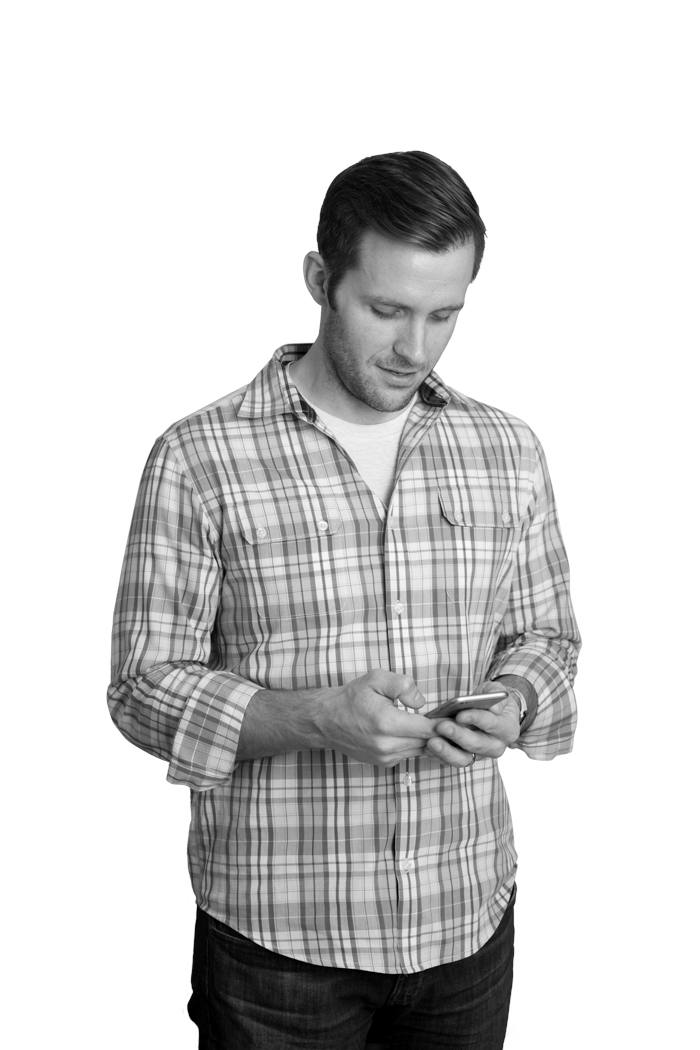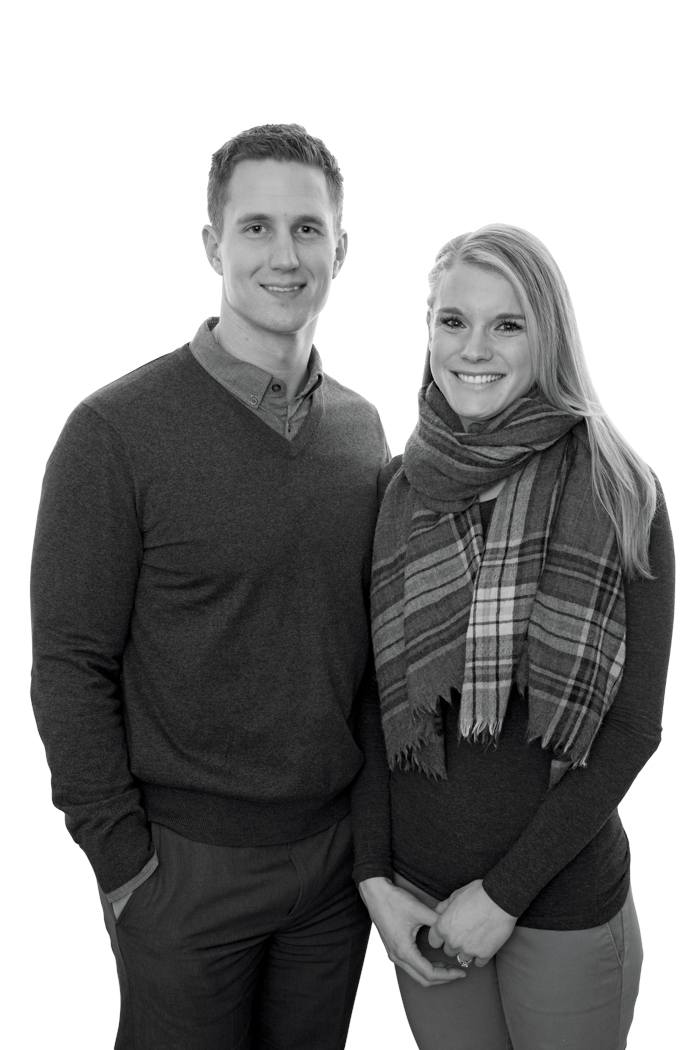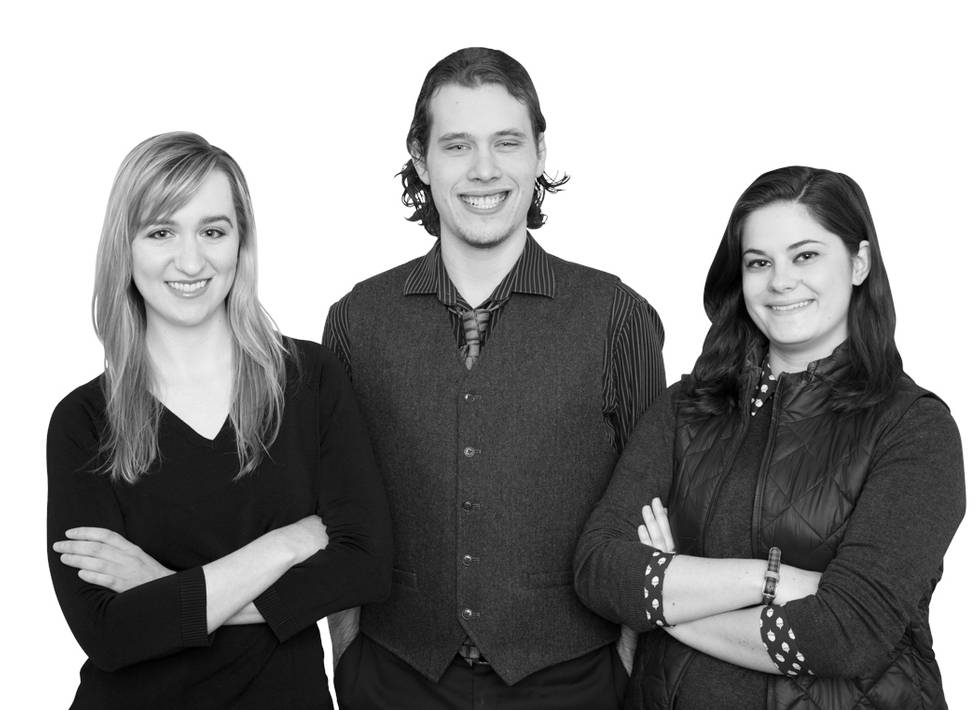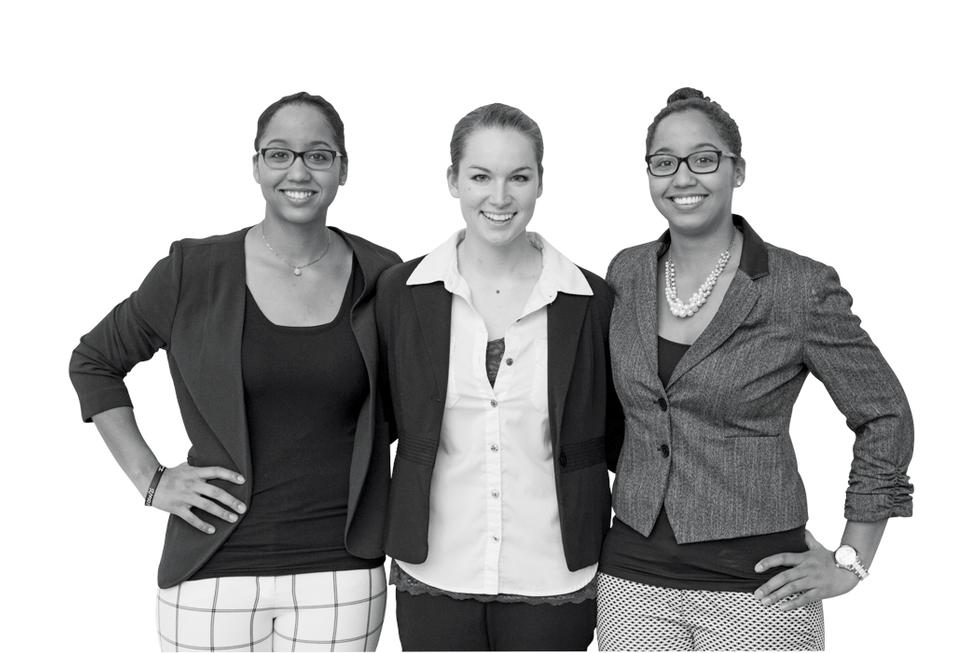Hot ideas and inventions
Student startups launched through Center for Entrepreneurship
by Dottie Barnes
photos by Amanda Pitts
video by Tony Packer
“Why didn’t I think of that?”
It’s a common reaction when hearing stories of how peoples’ lives were changed because of one great idea or invention.
That’s the premise behind the hit TV show “Shark Tank,” where entrepreneurs see their dreams come true after seasoned investors help them launch an idea to market. Clever ideas have been turned into multi-million dollar businesses.
With help from Grand Valley’s Center for Entrepreneurship and Innovation (CEI), students are seeing their lives changed by their great ideas.
The center offers a variety of resources, including guidance from faculty members and access to state and regional shark-tank-like competitions where students compete for prize money.
Grand Valley students are designing prototypes, marketing inventions and even applying to appear on “Shark Tank.”
“We have students working in the center who own or are close to launching their own startups,” said J. Kevin McCurren, CEI executive director. “They are experiencing opportunities that stretch their capacity and build confidence to face whatever life puts in their path. They have the skills to create, build or start something without being afraid of failing.”
How fast can you run
Ryan Vaughn kept his “great idea” a secret because he didn’t want anyone to steal it. He said that was a mistake.
Vaughn came to Grand Valley in 2009 to earn a master’s degree in communications. He was also writing for his blog, “West Michigan All Star,” covering high school sports. He said he had been adrift for a few years after earning a bachelor’s degree in creative writing at Western Michigan University.
“I wanted to be a novelist,” Vaughn said. “A professor told me I was a very good writer, but I didn’t have anything to say that hadn’t been said better by someone else. What I took from that was I hadn’t lived enough, done enough. So, I decided to take a different path.”
Vaughn was an athlete in high school in Grand Haven and said playing sports was an important life experience. While covering games for his blog, the idea for Varsity News Network hit him.
“It’s all about communication,” said Vaughn. “There’s still such a thing as the team moms who get a call with results from the athletic director, and then start a phone tree. My idea would help the director communicate smarter.”
Vaughn said athletic directors don’t have the tools to communicate with hundreds of people; he wanted to invent a platform to make that happen. In 2010, Vaughn was chatting with close friend Matthew Anderson when Anderson shared an idea he had.

Varsity News Network is software that allows high school athletic directors to communicate with parents, athletes and the community.
“Matt pitched the idea I was thinking of for VNN,” said Vaughn. “I couldn’t believe it. We decided to become partners and found out we had five other competitors in Michigan alone, so the race was on. We didn’t have anything to patent or protect so we had to run fast.”
Vaughn said doors started to open once he started talking about his idea. The two were accepted to Start Garden, a local 12-week boot camp for entrepreneurs that also provided them with $20,000 at the end of the camp.
VNN synopsis
Who/When: Ryan Vaughn, ’10, started VNN in 2012 with an initial launch of the software.
Next: With 90 employees, Vaughn hopes to continue VNN’s success.
More: varsitynewsnetwork.com
Vaughn was also a graduate assistant at CEI where he received advice from mentors on how to grow the company. He and Anderson worked with a software developer and in 2012 landed on their current version of the software.
“Our software allows a high school athletic department to have a collegiate level sports communication platform without doing any of the work associated with it,” Vaughn explained. “For example, a parent may only want to receive game cancellations or scores and may only want them through text message. We can make that happen without the athletic director actually texting anyone.”
In 2013, Vaughn won first place and $500,000 in the Company Award category at the Accelerate Michigan Innovation Competition.
VNN now has 90 employees, including several Grand Valley graduates, and Vaughn works full time as CEO of the company.
“There were at least three times in this process when I was convinced it was over, and should just go to bed crying,” said Vaughn. “Like when our biggest competitor landed a deal that we thought would lock up the market across the whole country. But, you need to just keep going.”
Vaughn said one conversation can change everything. “You can’t have conversations unless you are on the court playing the game. Make sure you stay on the court so things can happen,” he said.
Accidental entrepreneurs
Alumnus Chris Werth, ’13, said the first prototype he built for his invention failed.
He remembers the moment his “great idea” clicked in his head. He was driving with his fiancée, Melanie Koops, a third-year physical therapy student at Grand Valley.
“It just hit me. I said out loud, ‘I got it! It’s a sideways hook,’” Werth recalled. That was shortly after Werth graduated with a degree in clinical exercise science. The Alpena native was working as a technician for Metro Health Hospital assisting physical therapists.
“Therapists would ask me to get a certain walker for their patients. About 50 walkers were in a closet stacked against each other,” he said. “By the time I found the right one, the time with their patient was almost up.”
Werth mentioned in a staff meeting that he would look for a solution; a Web search for answers came up empty, so he started coming up with solutions on his own.
“I started fiddling around in my garage with 2-by-4s and a metal hook, trying to build a hanging rack,” he said. “I knew the walkers needed to be held on one side, to store a lot of them in a small space. I designed it in a way that each walker hangs on an individual hook, making it easier for the therapist to quickly change leg height and wheel style with the walker in a racked position. The walkers rotate so therapists can quickly see all the types available.

Chris Werth, ’13 and Melanie Koops, ’16
“The sideways hook was the key,” he said.
Werth installed a prototype at work and the response was overwhelming. He was encouraged to patent the idea, but he thought it was too expensive. “I thought this issue was over,” Werth said. “But on two separate occasions therapists told me, ‘If you don’t do anything with this, I will steal it.’”
Werth LLC synopsis
Synopsis: Werth LLC was started by Werth and Koops in 2014 when Werth recognized a need for a hanging rack to organize and sanitize physical therapy walkers.
Growth: Winning a couple of competitions through Grand Valley helped them refine a prototype with a local manufacturer.
Next: Hoping to partner with a medical equipment distributor and applying to be on “Shark Tank.”
That’s when Koops got involved. She took the steps to patent the dimensions of the hook and Werth LLC was born. Koops got permission to hang a prototype in Grand Valley’s Cook- DeVos Center for Health Sciences and developed a website.
The pair needed to raise money to market the product. In 2015, Koops entered and won $750 and second place at Grand Valley’s Collegiate Entrepreneurs’ Organization Pitch Competition. A few months later she won first place and $5,000 at the Emerge 5x5 Night pitch competition.
The prize money and support from a local investor helped them register as vendors and display the Werth Rack at the American Physical Therapy Association’s Combined Sections meeting in February, as they hope to partner with a medical equipment distributor. The money also helped them refine the prototype with the help of a local manufacturer; it’s now formed out of sheet metal for easier installation.
Their next steps include applying for “Shark Tank” in the fall and getting married.
“We couldn’t have done this without Grand Valley,” said Koops. “Our undergraduate education helped us think critically and problem solve. We had support from our professors and connections to resources and competitions.”
Koops said they are building inventory and already have sales locally and in other states.
“We never planned to be entrepreneurs. We are accidental entrepreneurs,” Werth said. “We found a problem and made a simple solution. We fell into this business and sometimes that’s the best way to start a business.”
Don't doubt yourself
What started out as a class assignment in 2012 for a group of business students is now a product aimed at helping those with Raynaud’s disease, which causes fingers and toes to feel numb and cold in response to cold temperatures or stress.
Michael Kurley, ’13, Vanessa Gore, ’14, and Lindsay Noonan,’15 are the owners of the company Soletics, a word that combines “solar” and “athletics.”
“We had to come up with an idea surrounding clean energy and Lindsay thought of a solar-powered shirt,” explained Kurley, a graduate assistant at CEI. “Plus, if we entered a clean energy business competition, we didn’t have to take the final exam.”

Vanessa Gore, ’14, Michael Kurley, ’13, and Lindsay Noonan, ’15, developed a glove that heats hands and fingers individually.
The team entered, but switched their product to a solar-powered jacket when research showed there wasn’t much interest in a shirt. They won $2,000 and Best Prototype.
As they continued to enter contests and pitch their jacket idea, Kurley said they were approached by people who have Raynaud’s, suggesting they develop a heated glove instead. “Six million people are diagnosed each year and they are desperate for a solution,” he said. “There are a lot of heated gloves out there, but none of them are good. So, we started from scratch.”
The team worked with Keystone Solutions in Kalamazoo for a prototype design, a very thin glove with a fabric-based heating element that has sensors in the individual fingers to control the heat to each finger.
Soletics synopsis
Synopsis: Soletics has developed a glove that heats hands and fingers individually — currently targeted at helping those with Raynaud’s disease.
Growth: Starting as a class assignment in 2012, Soletics has developed into a company that is currently seeking FDA approval.
Next: Seeking FDA approval and fulfilling more than 400 preorders.
Between competition winnings and investors, Soletics has raised about $500,000. The gloves cost $250 and they currently have more than 400 preorders. The goal this year is to gain FDA approval.
“We were willing to be flexible,” said Kurley. “We were never in love with the product to begin with, so we were open to consumer feedback. But, more importantly than that, we never doubted ourselves.”
Ready for market
Launching a product is often a team effort. That was the case for members of Fluition Innovations, formed by alumnae Briauna Taylor, ’14, a business major; her twin sister, Brittany Taylor, ’14, a business major; and Kathryn Christopher, ’15, a product design and manufacturing engineering major.
Their device, Stratus X1, is an electric sit-to-stand device that lifts patients by their hips rather than their arms. It will soon enter its first clinical trial at Grand Valley.
The idea for the device started in 2013 in a product design class led by John Farris, professor of engineering. Farris connected the students with physical therapists at Spectrum Health who wanted an easier way to lift patients.
Farris and engineering students helped design the device and are listed on the patent. All of the prototypes for the device were built at Grand Valley.
“The device is unique because it stands the patient up in a correct standing motion, so they are rehabbing the muscles that they use to stand,” Briauna Taylor explained. “They are not relying only on the health care professional to stand them up.”

Briauna Taylor, ’14, Kathryn Christopher, ’15, and Brittany Taylor, ’14, are Fluition Innovations.
Taylor said the device is also unique in that it can track patient progress, recording the percentage of body weight the patient is lifting during the standing motion.
In 2014, the team won $35,000 in prize money to help market the device. Their goal now is FDA approval.
Fluition Innovations synopsis
Synopsis: Developed by Fluition Innovations, Stratus X1 is an electric sit-to-stand device that helps physical therapy patients learn to stand again.
Growth: The idea began in 2013 for a product design class. Since then a prototype has been refined several times.
Next: FDA approval
How to be wrong
McCurren said mentors at CEI try to emphasize certain characteristics to entrepreneurs: learn how to change directions, create with a network of people, take appropriate risk, and learn how to be wrong.
“It’s like learning how to cook without a recipe or going to the grocery store,” he said. “It’s figuring out what I can do with the stuff I have, learning how to experiment and creating what I can for that particular day.”
To read about more Grand Valley student startups, visit neugvsu.com or gvsu.edu/cei.
